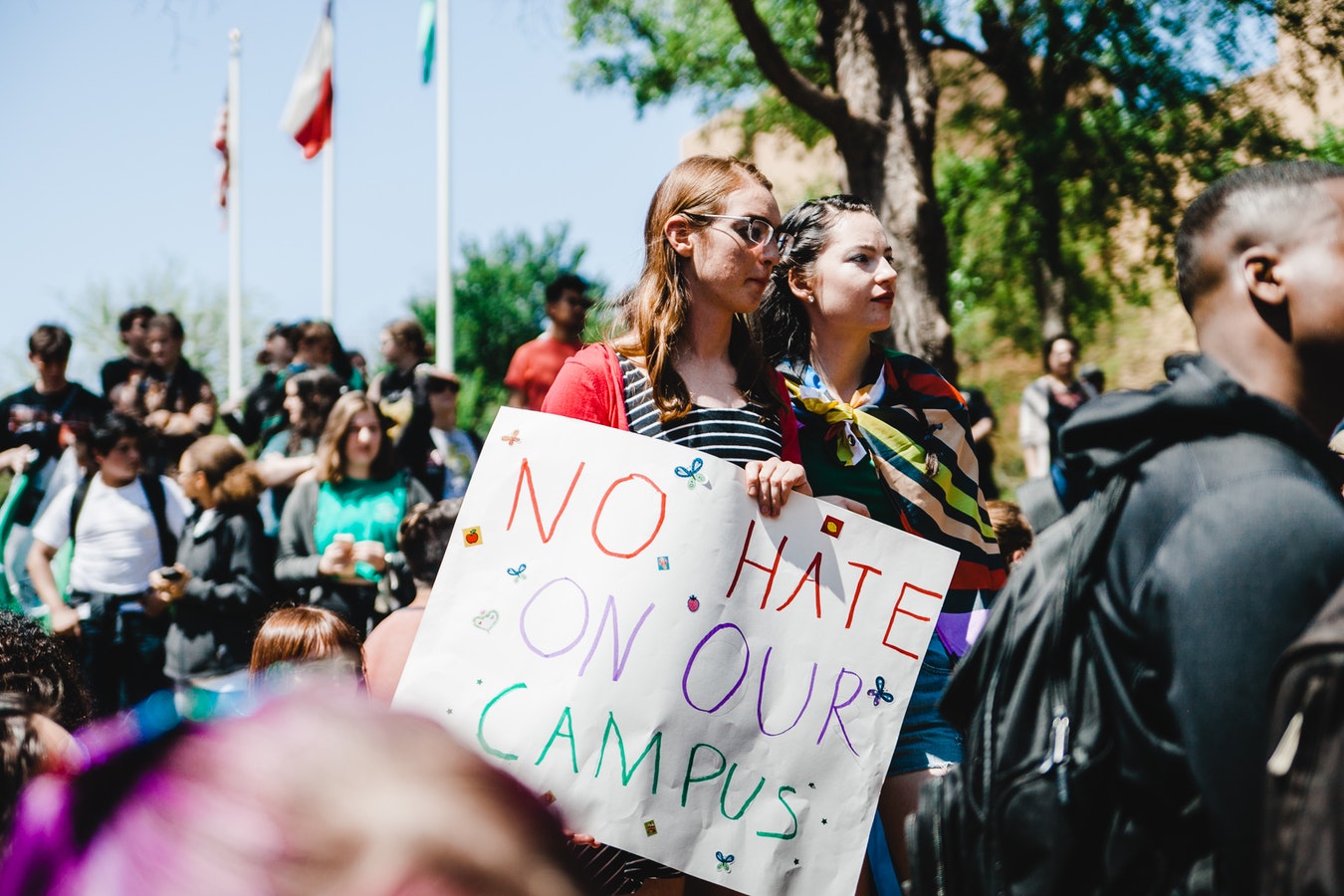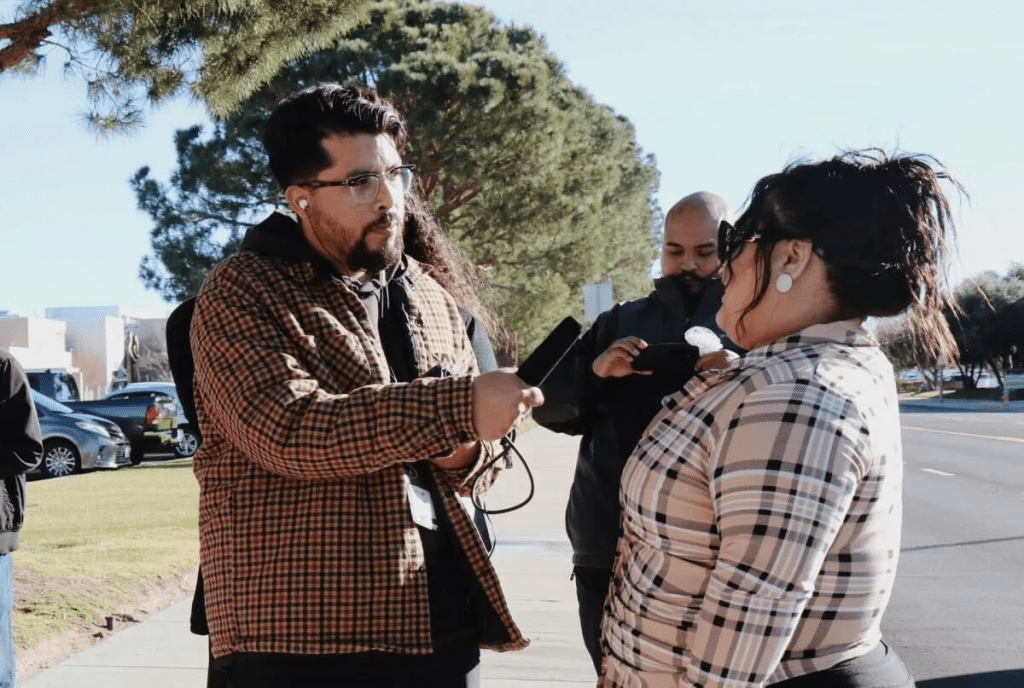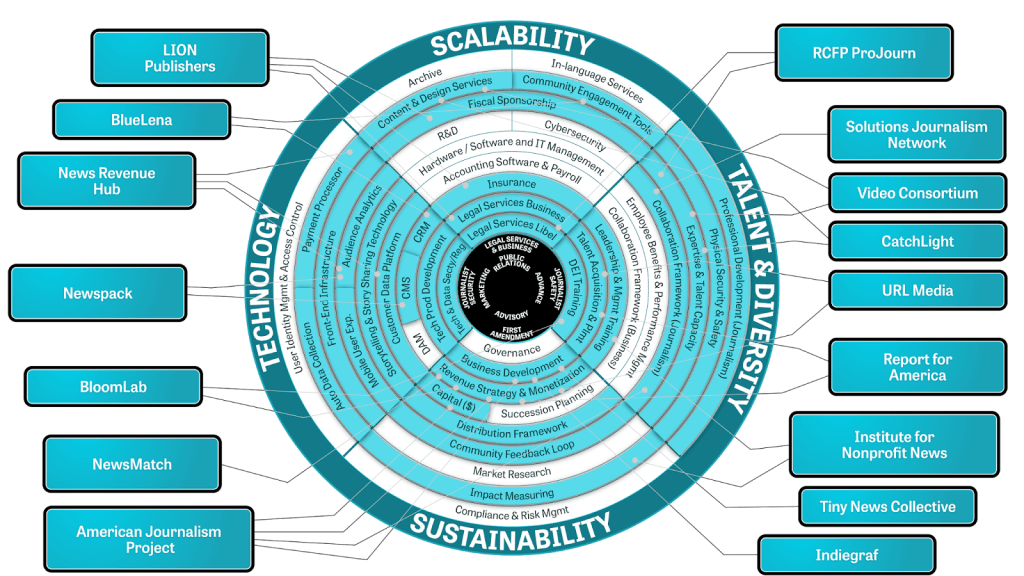
High Schools: New Front Lines in Battle for Free Speech
Free speech continues to be broadly under attack in the United States, and a new front in the struggle has emerged in America’s high schools.
But the threat to free speech does not always take the form imagined or described in much of the public dialogue on this issue. The challenges to free expression follow no particular political line and are far more ubiquitous than most people realize.
Since the fall of 2017, student researchers at Georgetown University have been building the Free Speech Tracker, an online tool for monitoring and documenting threats to political, social, and intellectual expression in education, civil society and government. After examining and publishing online the details of nearly 200 episodes of actual or possible infringement of speech, our Free Speech Project finds serious, ongoing reason to worry about the survival of this fundamental building block of American democracy.
Conventional wisdom holds that today’s colleges and universities are, for the most part, rigid enclaves where, in an ironic turn of events, a liberal, even radical, establishment allegedly tends to suppress all opposing conservative or centrist voices.
Our tracker suggests otherwise. Of the incidents now documented, more than half took place in an academic environment, many at private institutions, which – unlike public institutions — are not strictly bound by the First Amendment. The popular stereotype of conservative voices being ruthlessly shut down is true in some instances, but usually involving the same few well-known people, who tend to arrive on campus with disruption, rather than a serious debate, on their minds.More striking, and counter-intuitive, however, is the fact that liberal or progressive views are also being suppressed, albeit with less fanfare and often out of public view altogether.
As Donald Trump’s presidency wears on, the turmoil on many campuses mostly reflects the extreme polarization in national politics. Dissent is now at least as likely to be suppressed on the left as on the right.
To be sure, our latest documentation demonstrates that some conservatives are still subject to the hecklers’ veto. In one prominent example, Christina Hoff Sommers, a resident scholar at the American Enterprise Institute who believes that American feminism has undergone a damaging radicalization was the target of intense disruption when she spoke at the law school of Lewis & Clark College in Portland last year. Throughout her talk, protesters chanted refrains opposing her views and sometimes drowned her out by singing.
But more instances of suppression on the other side continue to emerge:
- As part of an initiative to create “pop-up” courses in social justice at the University of Southern Maine, a former full-time professor offered students one course credit for taking a bus to Washington, D.C., to lobby Republican Sen. Susan Collins during the hotly contested confirmation hearings for Supreme Court Justice Brett Kavanaugh. After the university learned of the unconventional plan, it permanently barred her from teaching there.
- In an echo of the Vietnam War era, during a career fair at California State Polytechnic University (Cal Poly) in San Luis Obispo, a small contingent of student peace activists attempted to disrupt other students’ access to representatives of Raytheon, a defense contractor; they handed out leaflets, sang and filmed their own protest. Weeks later, organizers of the demonstration received emails from university administrators, informing them they would be investigated for “violating multiple codes of conduct.” Before long, however, disciplinary proceedings were dropped.
But the most notable phenomenon we have observed recently is that free speech is being aggressively challenged at the high school level, including in student publications. In some cases, school administrators are squelching views they find outlandish or disagreeable, but the complaints often have less to do with ideology than with avoiding controversy of any sort. Often, after acting harshly, they have second thoughts or outsiders step in to calm the situation:
- A Stanford-bound high school valedictorian in Petaluma, California, had her microphone cut in the middle of delivering her commencement address, just as she mentioned her school’s handling of sexual assault. Although she was unable to finish her speech, she later posted it to YouTube, where it received more than 414,500 views as of January 2019.
- Another valedictorian, at Holy Cross High School in Covington, Kentucky, arrived at his commencement to discover that his speech had been canceled, even though he had submitted the text in advance. His planned address touched on themes of youth activism, civic engagement and standing up for one’s beliefs. It specifically mentioned the students from Marjory Stoneman Douglas High School in Parkland, Florida, the site of a deadly shooting in February 2018, and their movement to end gun violence. The class president was also denied the opportunity to give her speech.
- In Prosper, Texas, a much-admired high school newspaper adviser was fired, after the principal complained that under her guidance, the paper published articles unflattering to the school and not “uplifting” to the community.
- A high school teacher who was also a member of the city council in Pico Rivera, California, was suspended after astudent recorded him in class calling people in the military the “lowest of the low.” The teacher, ostensibly embarrassed, later dropped his appeal of the suspension and said he did not want his job back.
- The principal of Burlington High School, in Vermont, demanded that its student-run newspaper remove an article concerning misconduct by a faculty member. After backlash from student journalists and press freedom organizations, he reversed his decision, but instated a new policy of a 48-hour review period before publishing stories online. (Days later, the local school district commissioners reversed that policy, too.)
- After the student newspaper at Herriman High School in Utah published news of a popular teacher who had left his position without explanation, the school temporarily shut down the paper and took over its website and social media accounts.
- Noble and Greenough, an elite private school near Boston, removed a painted portrait by its artist-in-residence because it depicted a young woman with her middle finger raised in protest in front of a hotel with a sign bearing the Trump name. The artist decried the action as censorship.
- An Arkansas school district censored a high school newspaper’s investigation into the transfer of multiple football players between schools within the district, in violation of policy. After the school demanded the article be taken down and suspended publication of the newspaper, the Student Press Law Center became involved. As a result, the investigative report and a related editorial were made publicly available after all.
- In Plainfield, Indiana, a 17-year-old high school senior was prevented from publishing in the monthly student magazine her report on a classmate who had disappeared from school after being arrested on multiple sexual assault charges. Administrators deemed the subject too sensitive to discuss, and even vetoed the student journalist’s proposal for a series on how to prevent sexual assaults.
In most of these cases, the students being silenced are headed for college, where they can expect more complicated challenges to freedom of expression. Educating high school principals and school boards may be a critical step to improving free speech on college campuses and beyond.
Image (top) by Heather Mount on Unsplash
Sanford J. Ungar, a veteran journalist and president emeritus of Goucher College in Baltimore, is director of the Free Speech Project at Georgetown University. He teaches undergraduate seminars on free speech at Georgetown and Harvard.
About the Free Speech Project
The nonpartisan and independent Free Speech Project at Georgetown University was established in 2017, with support from the Knight Foundation, to assess the condition of Free Speech in America today – in education, in civil society, and in government. It assembles information on a national scale, documents incidents in which Free Speech has been challenged in recent years and collects analysis from various points of view of the struggle to sustain First Amendment values in these divisive and tense times. The Project is also concerned with the health of independent media and their ongoing capacity to help citizens understand how government is conducting the public’s business. It publishes a periodic newsletter and holds public forums on First Amendment issues. The Free Speech Project hopes to suggest, and to model, new frameworks to enhance the prospects for lucid and open conversation in the public sphere, especially on college and university campuses, about the great issues of our time. With support from the Andrew W. Mellon Foundation, it is adapting the material on the Free Speech Tracker to create curriculum modules for use in colleges and universities.
The selection of incidents documented on the Free Speech Tracker is by no means comprehensive and never will be. The results are necessarily anecdotal, and despite efforts to avoid it, there could be a selection bias in the incidents chosen. And the classification of people whose expression is compromised as being on the “right” or the “left,” “conservative” or liberal,” may sometimes be subjective and arbitrary.
The Free Speech Project is a faculty-led initiative. The content presented on the website and the Free Speech Tracker does not represent the views or official position of Georgetown University.
Recent Content
-
Journalismarticle ·
-
Journalismarticle ·
-
Journalismarticle ·


